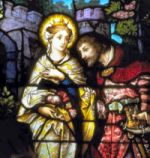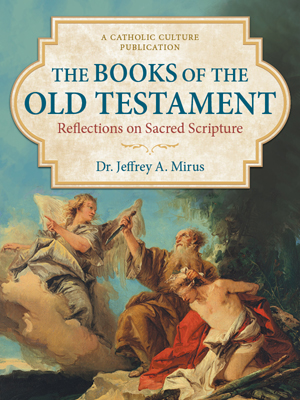Catholic Activity: St. Barbara
Short biography and description of traditions related to St. Barbara.
DIRECTIONS
Barbara (December 4) — According to legend, this Saint died at Nicomedia in Asia under the persecution of Maximinus in 306. Later legends relate that her own father, who had kept her prisoner in a tower, dragged her before the judge and accused her of being a Christian. At her execution a terrible storm suddenly arose, killing her father with a flash of lightning.
Her veneration was brought from the Middle East by the Crusaders. She quickly became patron of all those who are imprisoned (as she had been), of towers and fortresses (since she had been kept in a tower), and, because of the lightning flash at her death, of those whose work is connected with flashes of light, such as artillery soldiers, bellmakers, cooks, and beacon light crews. She is also the patron of architects because she was commonly pictured holding a tower building in her hand.
Her greatest and most important patronage, however, is that against sudden death (since her father was killed suddenly at her execution). In medieval times she was universally invoked with prayers and hymns to grant a peaceful and well-prepared parting from this life. Her day was a holyday in many sections of Europe. The miners chose her as their special patron because their work exposes them to constant danger of sudden death. In many countries of Europe her day still is the official feast day of the miners and the military units of artillery. In gratitude for her protection the mining town of Schwaz, in the Tirol, erected a monument to her in 1901.
There is also the attractive custom of "Saint Barbara's Branch," still practiced in some parts of Europe. On December 4 small branches are broken from fruit trees, especially cherries, and put in a pitcher of water to be kept in the kitchen or some other warm room of the house. These branches then break into bloom around Christmas Day. Many blossoms indicate great good luck; no blossoms mean very bad luck. He whose twig bursts into flower just on Christmas Day is especially blessed and is sure that he will not die during the following year. Apart from these superstitions, the Barbara Branch is now, in most places, used as the Saint's tribute to the Holy Child in the crib, for the branches are brought into blossom with the purpose of using them to decorate our Lord's manger at Christmas.
LITURGICAL PRAYER: O God, who among other miracles of Thy power hast given also to the weaker sex the victory of martyrdom, grant, we beg Thee, that we may come to Thee through the example of Saint Barbara, Virgin and Martyr, whose birthday we celebrate.
Activity Source: Holyday Book, The by Francis X. Weiser, S.J., Harcourt, Brace and Company, Inc., New York, 1956






